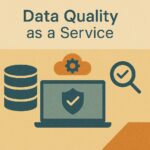
The Role of Analytics in HR: Workforce Planning and Optimization
- admin
- August 22, 2025
- Uncategorized
- 0 Comments
HR is no longer just an administrative function—it has evolved into a strategic partner driving organizational success. By leveraging HR analytics, companies gain data-driven insights to optimize workforce planning, enhance employee engagement, and improve decision-making. As businesses strive for a competitive edge, HR departments are shifting from traditional roles to data-driven decision-making. HR analytics empowers organizations to analyze workforce trends, predict talent needs, and drive efficiency.
The Evolution of HR Analytics
Traditionally, HR decisions were primarily based on intuition and experience. However, the digital transformation has introduced data-driven decision-making, allowing HR professionals to leverage vast amounts of employee data to gain insights and optimize workforce strategies.
The evolution of HR analytics can be traced through several stages:
- Descriptive Analytics: Basic reporting of historical data (e.g., turnover rates, time-to-hire)
- Diagnostic Analytics: Understanding why certain trends occur (e.g., reasons for attrition)
- Predictive Analytics: Forecasting future trends based on historical data (e.g., identifying flight risks)
- Prescriptive Analytics: Recommending actions based on projected outcomes (e.g., targeted retention strategies)
Key Applications in Workforce Planning
1. Talent Acquisition and Recruitment
Analytics has transformed recruitment from a reactive to a proactive process. Organizations now use data to:
- Identify the most effective recruiting channels
- Predict future talent needs based on business growth projections
- Assess the quality of hire through performance metrics
- Optimize job descriptions and candidate communications
- Reduce time-to-hire and cost-per-hire
2. Workforce Forecasting
Effective workforce planning requires accurate predictions of future talent needs. HR analytics enables organizations to:
- Project headcount requirements based on business growth metrics
- Identify skill gaps before they become critical
- Plan for succession by identifying high-potential employees
- Analyze retirement risks and create knowledge transfer strategies
- Model various business scenarios and their impact on workforce needs
3. Performance Management
Analytics has revolutionized how organizations evaluate and improve employee performance:
- Identify high and low performers objectively
- Correlate performance with various factors (training, management style, team composition)
- Design targeted development programs
- Predict future performance based on historical trends and patterns
- Optimize goal-setting methodologies
Workforce Optimization Strategies
1. Employee Engagement and Retention
With the high cost of turnover, organizations are leveraging analytics to:
- Identify factors that drive engagement
- Predict which employees are at risk of leaving
- Customize retention strategies for different employee segments
- Measure the ROI of engagement initiatives
- Design more effective recognition programs
2. Skills Development and Learning
Analytics helps organizations optimize their learning and development investments:
- Identify critical skills gaps across the organization
- Personalize learning pathways based on individual needs
- Measure the effectiveness of training programs
- Project future skill requirements
- Optimize learning delivery methods
3. Workforce Productivity
Optimizing productivity is a key goal of HR analytics:
- Identify productivity drivers and barriers
- Compare productivity across teams and departments
- Correlate productivity with workplace factors (remote work, flexible hours)
- Design optimal work arrangements
- Measure the impact of wellness programs on productivity
Implementing HR Analytics: Challenges and Best Practices
1. Challenges
Despite its benefits, implementing HR analytics comes with challenges:
- Data Quality: HR data is often scattered across multiple systems and may lack consistency
- Privacy Concerns: Employee data is sensitive and requires careful handling
- Analytical Skills Gap: Many HR professionals lack advanced analytical skills
- Change Management: Transitioning to data-driven decision-making requires cultural change
- ROI Measurement: Quantifying the impact of HR analytics can be challenging
2. Best Practices
To maximize the value of HR analytics, organizations should:
- Start Small: Begin with specific business questions that can demonstrate quick wins
- Ensure Data Quality: Invest in data cleaning and integration before advanced analytics
- Build Cross-Functional Teams: Combine HR expertise with data science skills
- Focus on Storytelling: Present data insights in compelling, action-oriented ways
- Maintain Ethical Standards: Develop clear policies for data usage and privacy
- Continuously Evolve: Gradually move from descriptive to predictive and prescriptive analytics
The Future of HR Analytics
As technology advances, HR analytics will continue to evolve:
- AI and Machine Learning: More sophisticated prediction models
- Real-time Analytics: Continuous monitoring instead of periodic analysis
- Natural Language Processing: Analysis of unstructured data (reviews, feedback)
- Augmented Analytics: Tools that automatically identify patterns and anomalies
- Integration with Business Outcomes: Direct correlation between HR metrics and business results
Key Takeaways
HR analytics has transformed workforce planning and optimization from an art to a science. By leveraging data, HR professionals can make evidence-based decisions that align with business goals and improve employee experiences. As technology continues to evolve, the capabilities of HR analytics will expand, further cementing its role as a strategic business function.
Organizations that invest in HR analytics capabilities now will be better positioned to attract, develop, and retain talent in an increasingly competitive landscape. The future of HR lies in balancing the human touch with data-driven insights, creating workplaces that are both productive and fulfilling.



